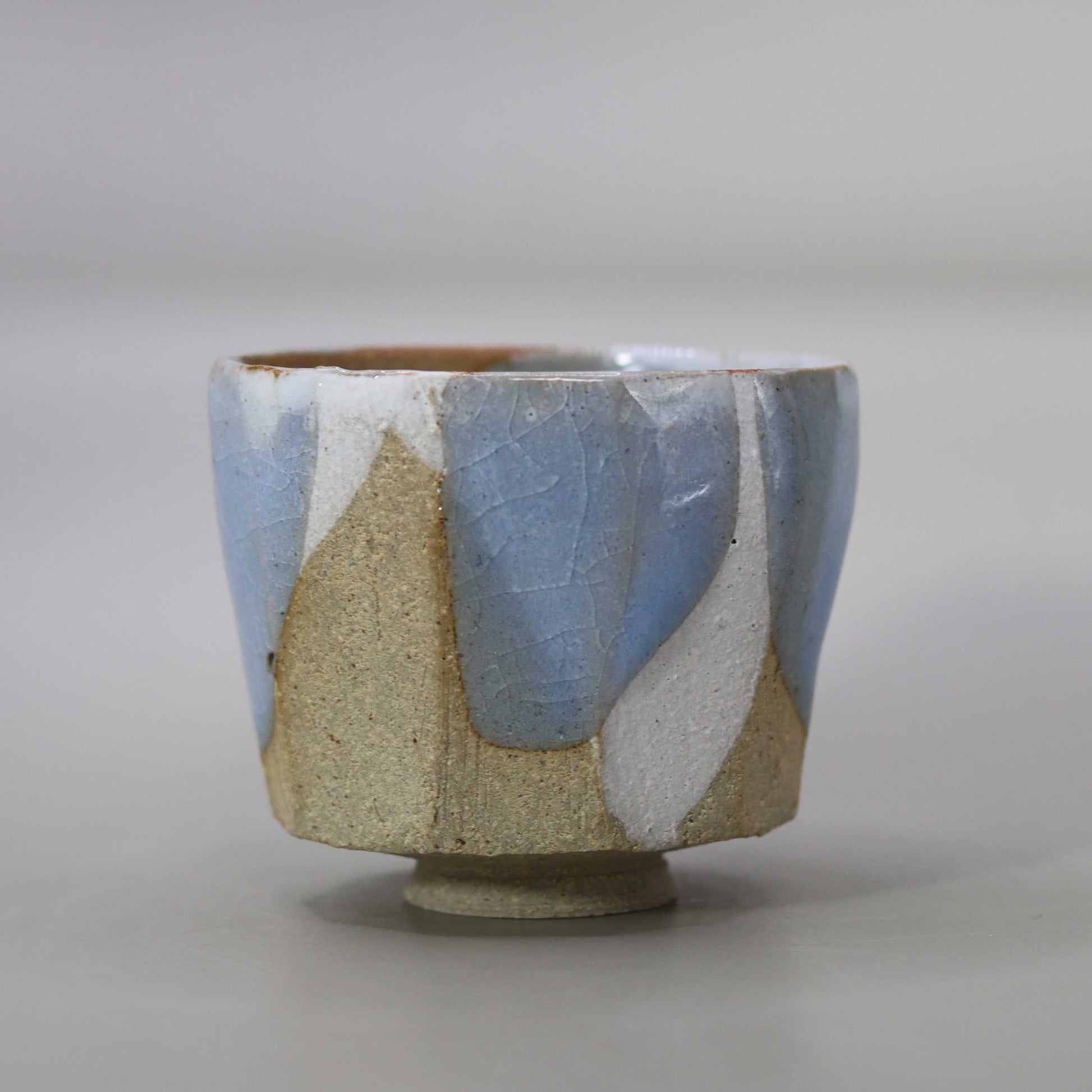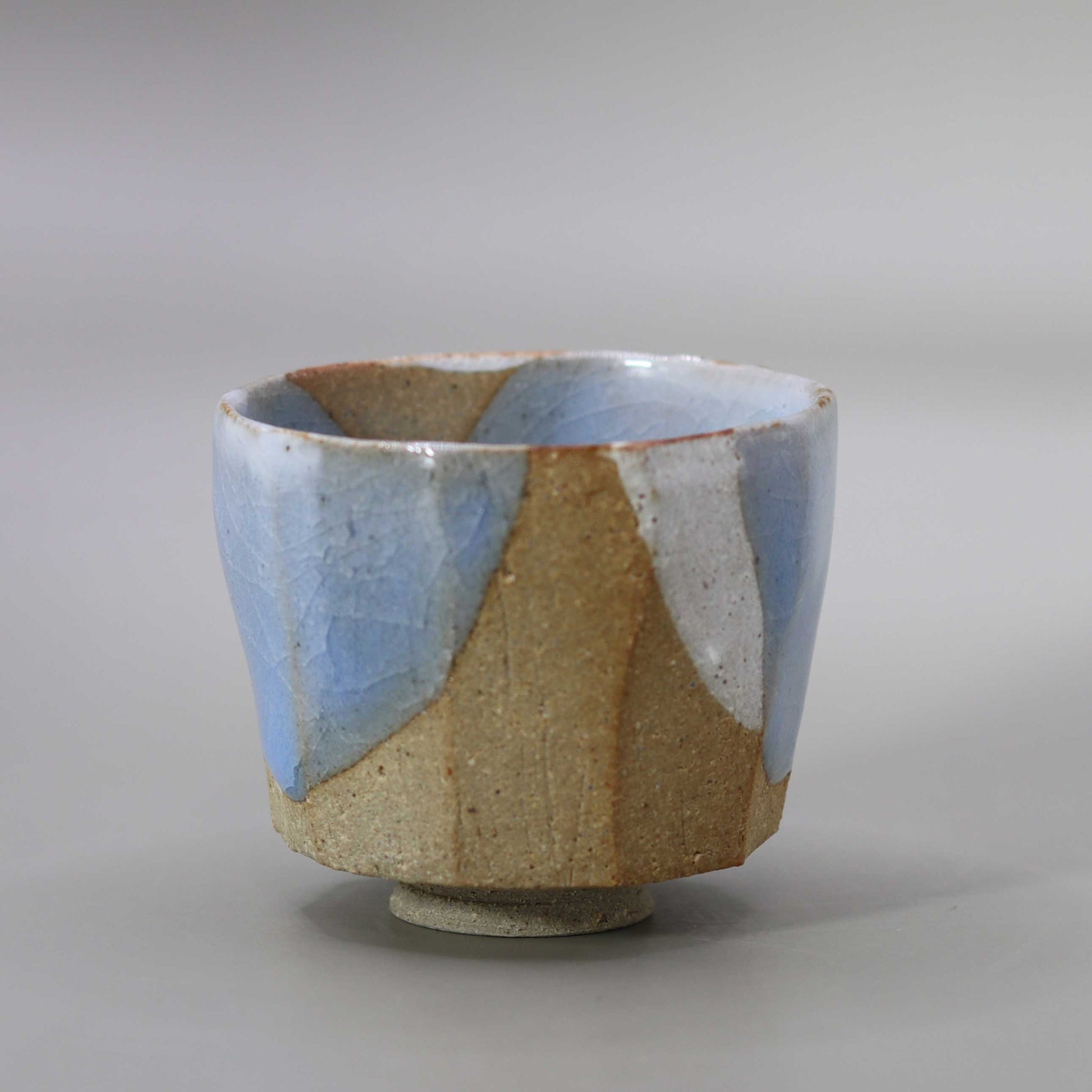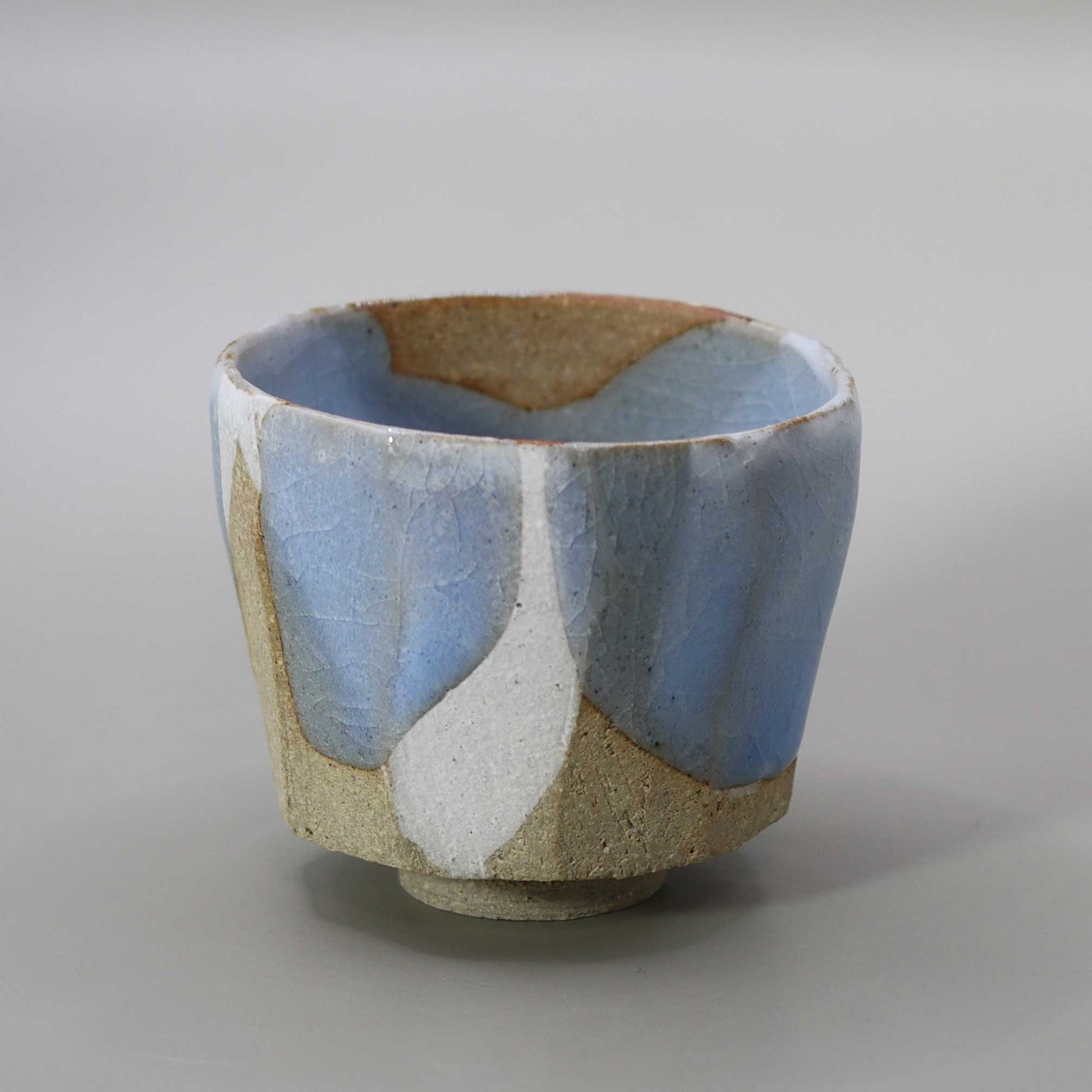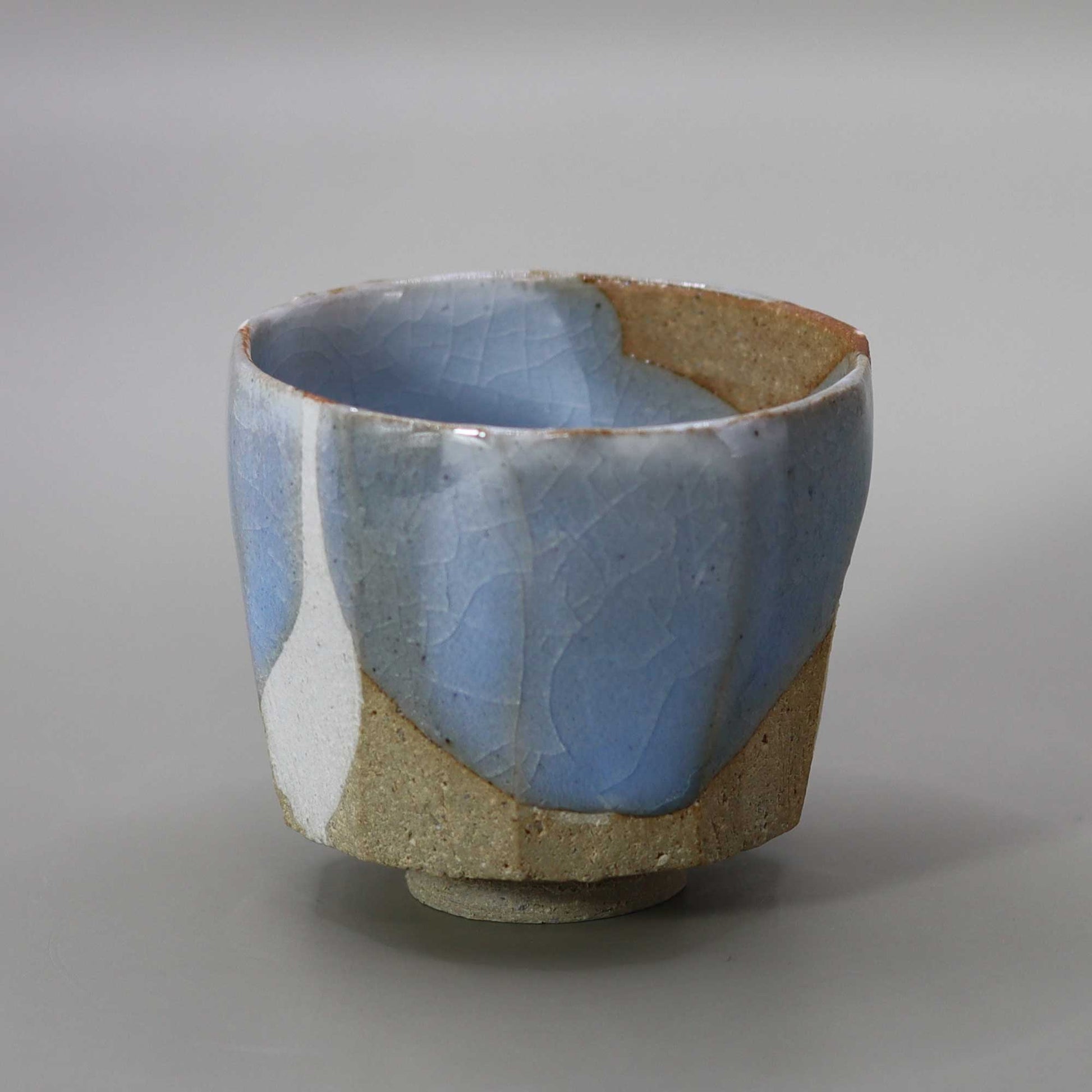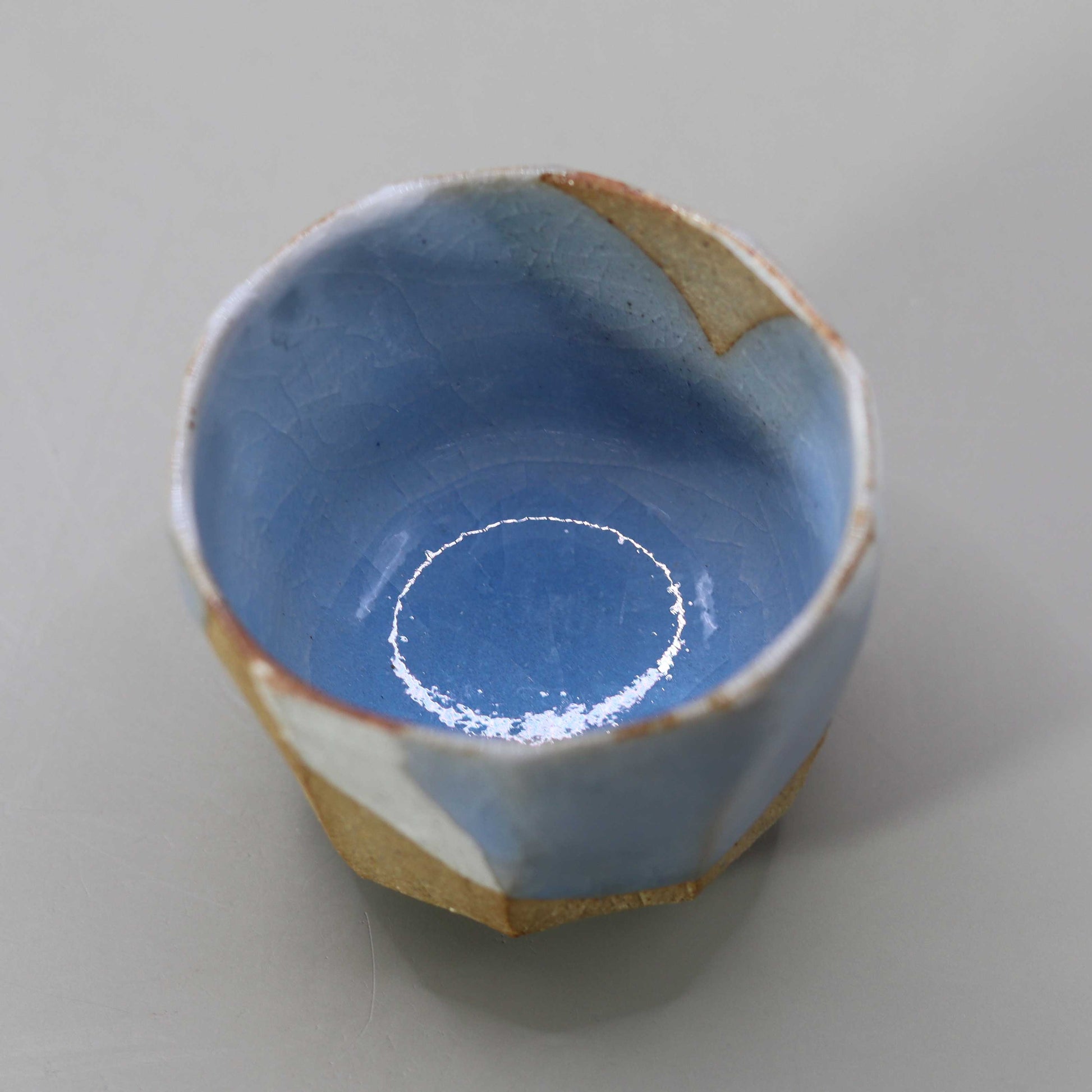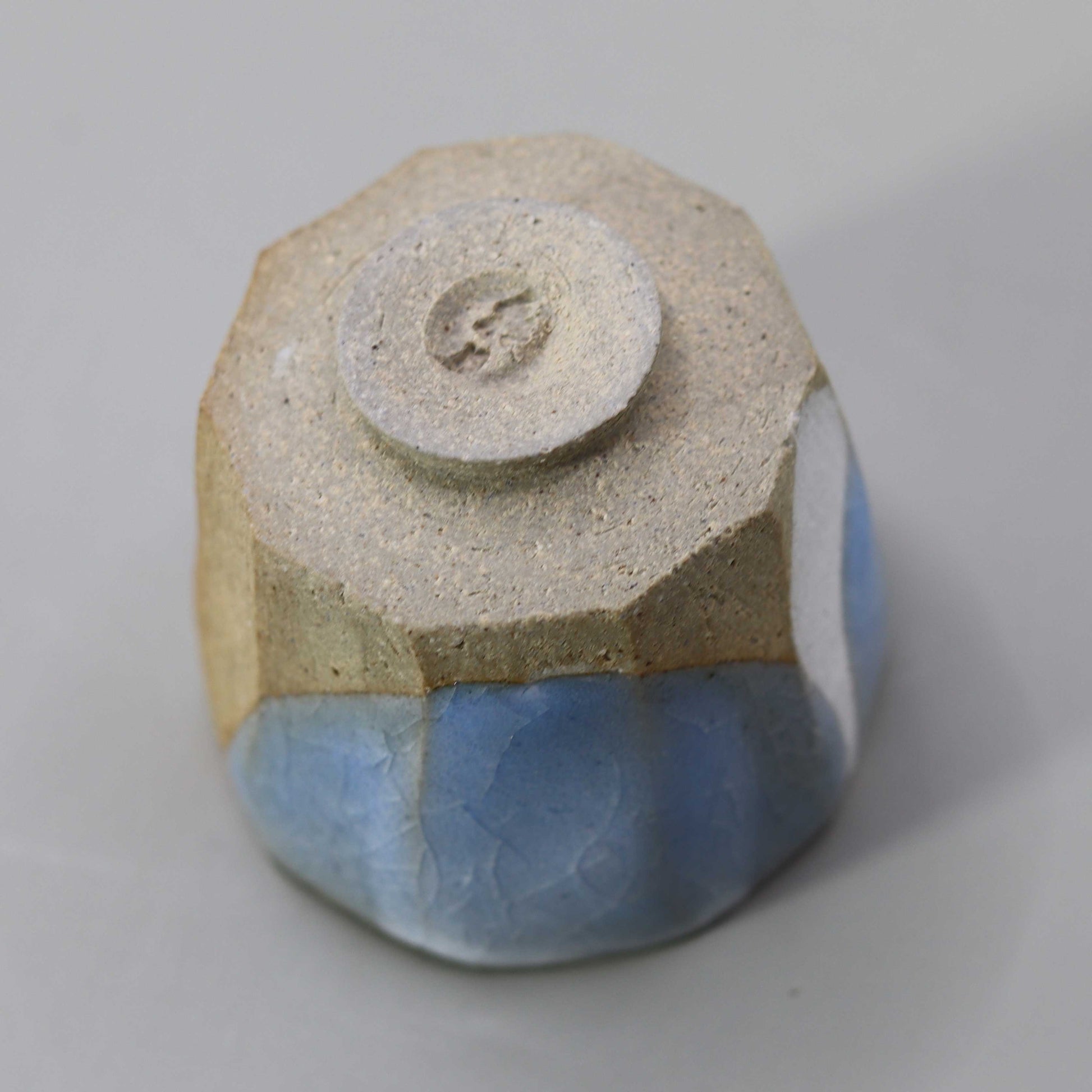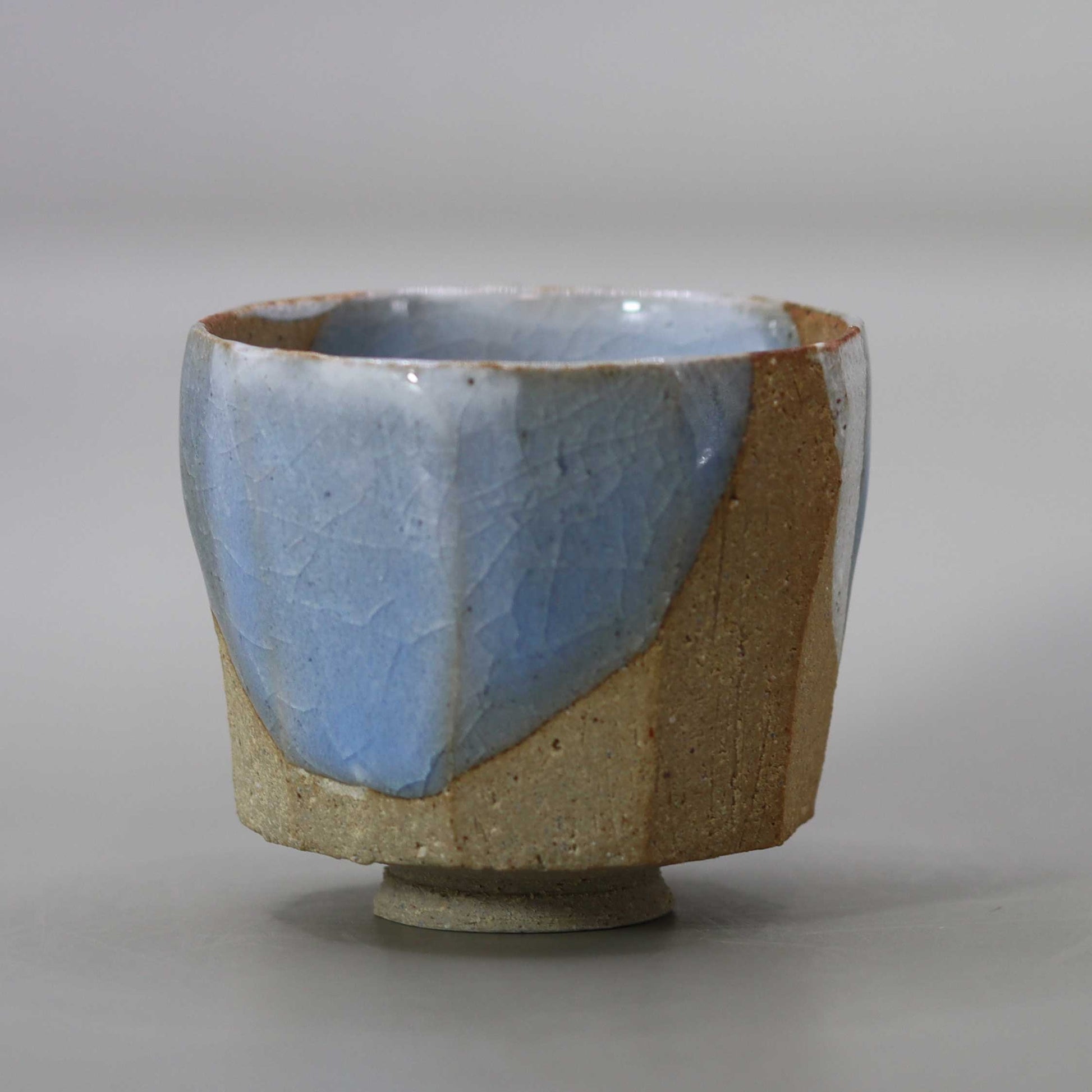Sake cup Produced in Uji, Kyoto asahi by Matsubayashi Hosai
Sake cup Produced in Uji, Kyoto asahi by Matsubayashi Hosai
Couldn't load pickup availability
Width: 5.8cm Height: 5.0cm
The various expressions of the chamfered edges created by the white coating and the moon-white glaze
The "Shuten Tsukishiroyu Nagashi" is a unique piece created by Matsubayashi Hosai, and its charm is in the delicate colors created by the flowing of the white makeup and Tsukishiroyu glaze, and the scarlet color fired in a climbing kiln, which show different expressions depending on the viewing angle. The beveled Shuten gives a different impression every time you change the angle, and the faint scarlet blends into the tranquil white, creating a natural transition and a profound landscape.
The natural flow of glaze drawn with a ladle
The glaze on this piece is allowed to flow naturally with a ladle, creating its unique appearance. When pouring the glaze, the emphasis is on the natural flow of the glaze, without stopping it, and this random beauty is the greatest feature of this sake cup. By deliberately not using the "stopping technique" that is usually used to control the glaze and instead allowing it to flow naturally, the power of nature and the artist's intentions are fused together in this piece.
A new challenge by combining different techniques
However, in this "Geppei Glow Flow", Matsubayashi Hosai has deliberately combined the "stopping technique" and the "flowing technique" to create a new beauty that is different from anything that has come before. The combination of these two techniques creates a slight sense of incongruity and asymmetry in the natural flow, and this contrast creates a new harmony. The moments when the flow of the glaze stops and continues are intricately intertwined, and the chamfering expresses a beauty with movement that is almost like a landscape painting.
Unique texture created by chance during firing
During firing, the unique texture and scenery created by the natural dripping of the glaze, which is unique to climbing kilns, further enhances the appeal of this sake cup. The poured glaze moves during firing, forming a flowing pattern, as if a landscape painting was being painted. This fusion of chance and deliberate technique creates a complex scenery that is captivating just by looking at it.
Expanding creativity and new discoveries
This sake cup "Tsukishiroyu Nagashi" is a work born from Matsubayashi Hosai's inquisitiveness, and it is a piece that teaches us that by incorporating various techniques and ingenuity, a new world never seen before can be opened up. While placing importance on the natural flow, the challenge of creating new discoveries by combining different techniques brings fresh vitality to the entire work. Each time you use it, you can enjoy its depth and changes, and the viewer will never tire of it.
Asahiyaki tradition and innovation
This is an innovative piece that is rooted in the traditions of Asahi ware, which has more than 400 years of history, but also incorporates modern sensibilities and techniques. During the Keicho era, Asahi ware was taught by Kobori Enshu and has continued to create tea utensils that embody the aesthetic sense of "kirei sabi." This piece also follows that tradition while pursuing new beauty with a modern sensibility, and the combination of the tsukishiro glaze and scarlet in particular breathes new life into the piece.
Innovation and Challenge
Matsubayashi Hosai took over as the 16th master in 2016, and continues to create new pieces with a modern approach while protecting the traditions of Asahi ware. His challenging pieces, such as Tsukishiroyu Ryushi, have been highly praised overseas, and his works have been shown at exhibitions in the UK and France. His innovation and challenges have greatly contributed to the further development of Asahi ware, and his works will continue to inspire many people in the future. This piece is a harmonious blend of innovation and tradition created by Matsubayashi Hosai. The natural scenery created by the flowing glaze and the accidental beauty of firing in a climbing kiln are fused together, making it a piece that brings new discoveries every time you use it. This piece, which incorporates a modern sensibility into the traditional Asahi ware technique, not only makes drinking sake more delicious, but also makes you feel the beauty of Japanese pottery once again.
16th Matsubayashi Hosai
In 2016, he assumed the name of the 16th Asahi-yaki master Hosai. Based on the aesthetic sense of "kirei sabi" (beautiful sabi) that underpins Asahi-yaki, the tea master Enshu Kobori, he creates tea utensils such as tea bowls, tea caddies, water jars, and flower vases, as well as the traditional Asahi-yaki deer-back and red deer-back vases, in the style of the 16th master, Tsukishiro-yu-ryushi, which has a modern atmosphere. He is active in presenting his works overseas, hosting tea ceremonies, and holding workshops to spread the culture of tea. He has experience in staying and presenting his works at the Leach Kiln in St. Ives, England, and exhibiting his works and hosting tea ceremonies at the Guimet Museum of Asian Art in Paris, France. In 2017, he held a commemorative exhibition to commemorate his succession at Takashimaya Kyoto and Mitsukoshi Nihonbashi Main Store.
Share
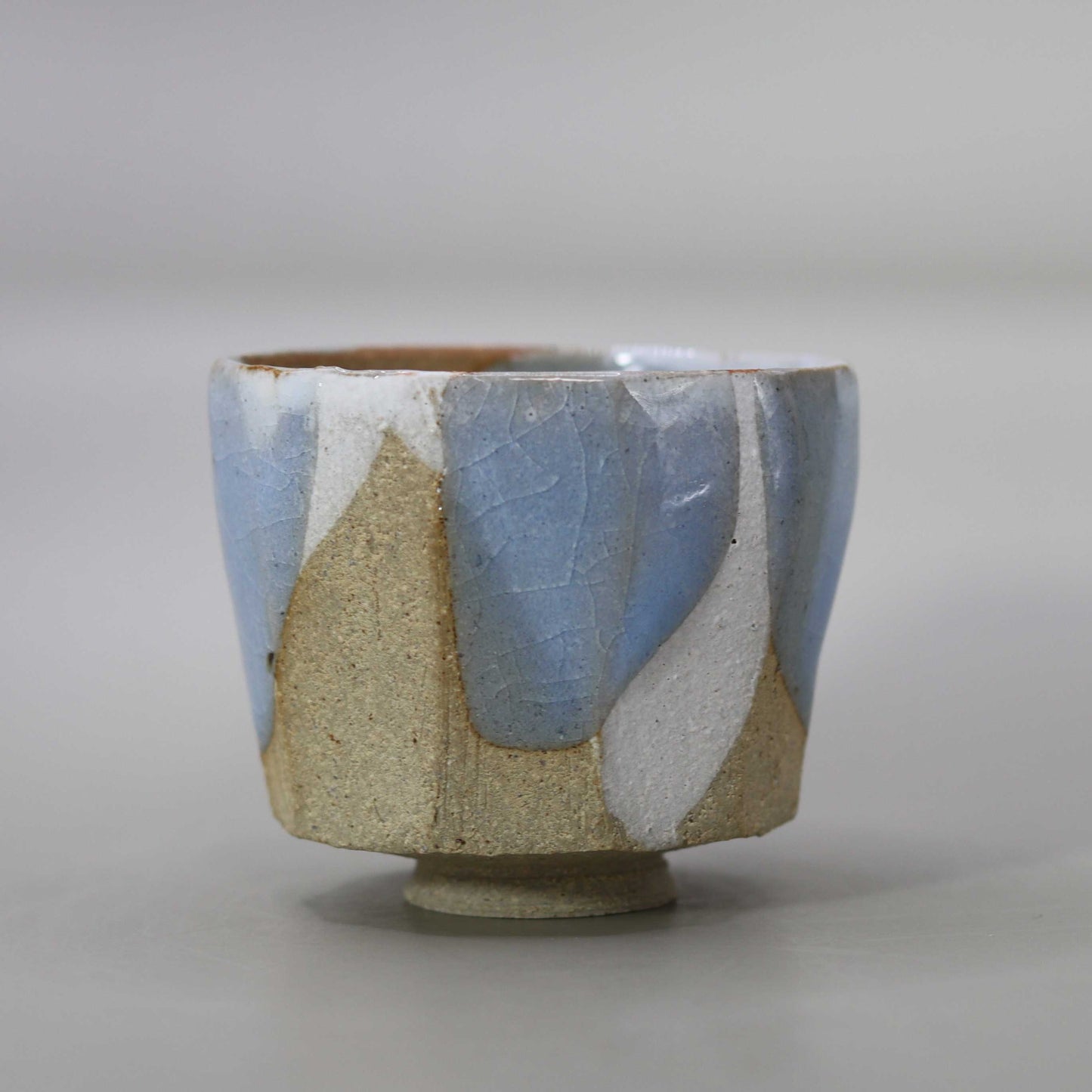

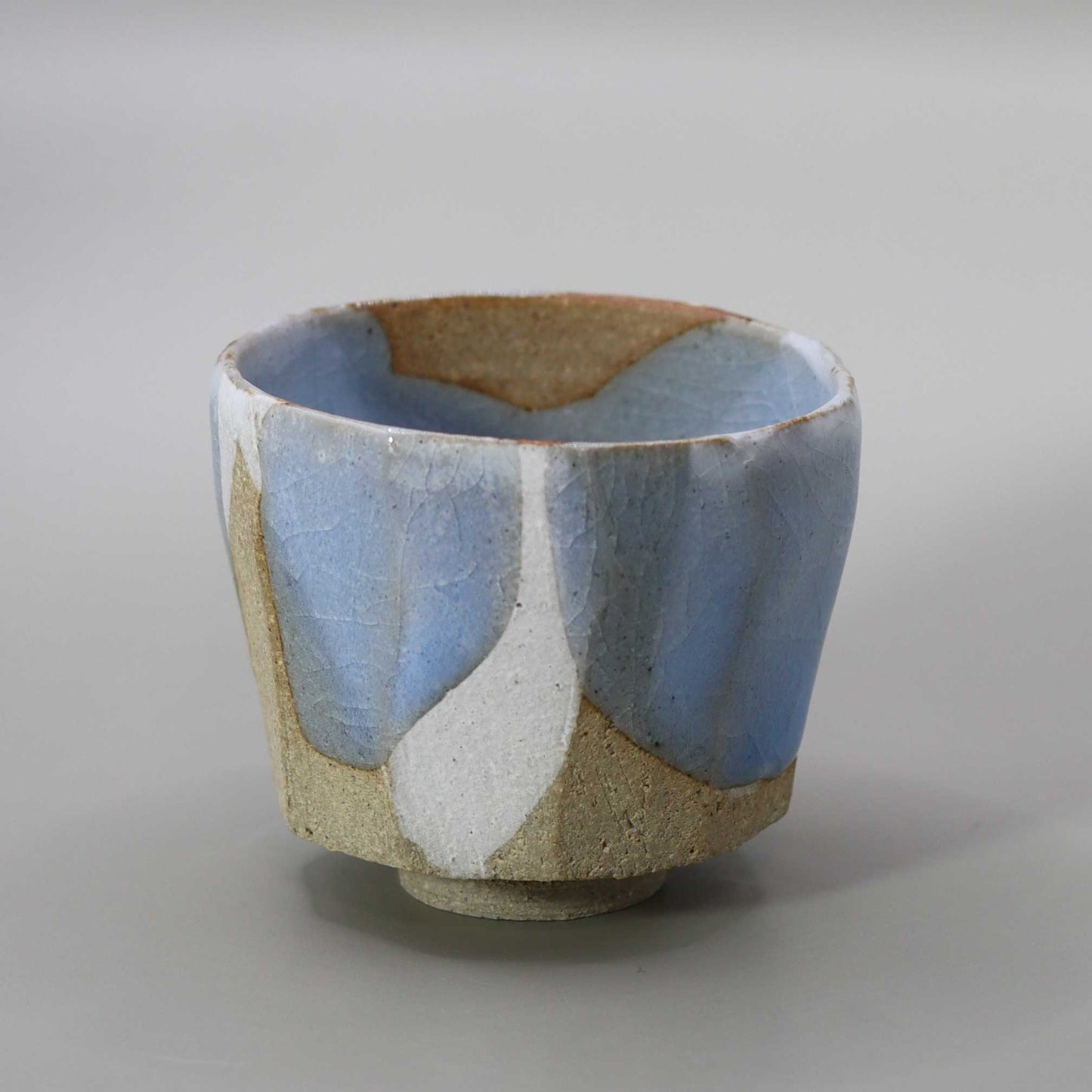
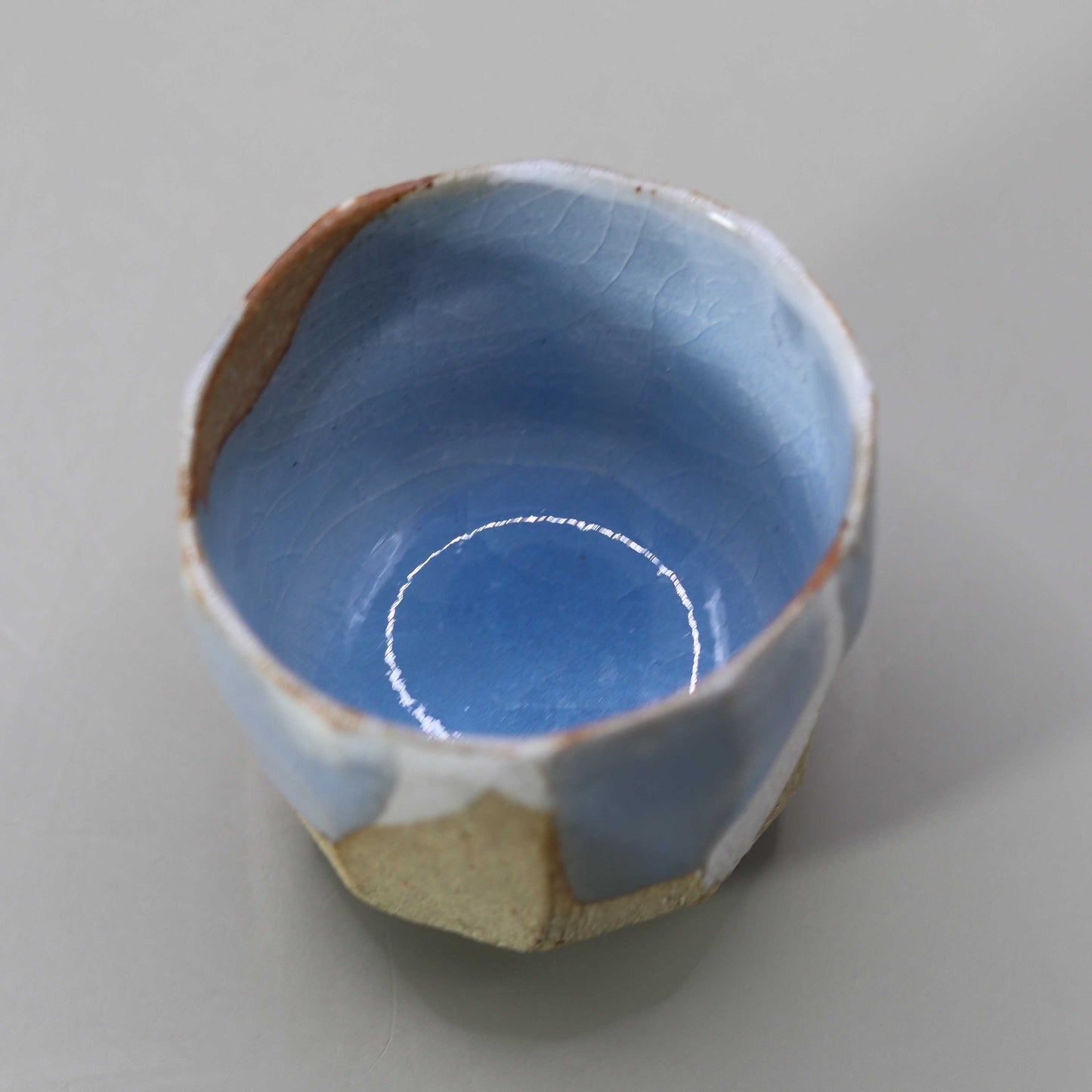

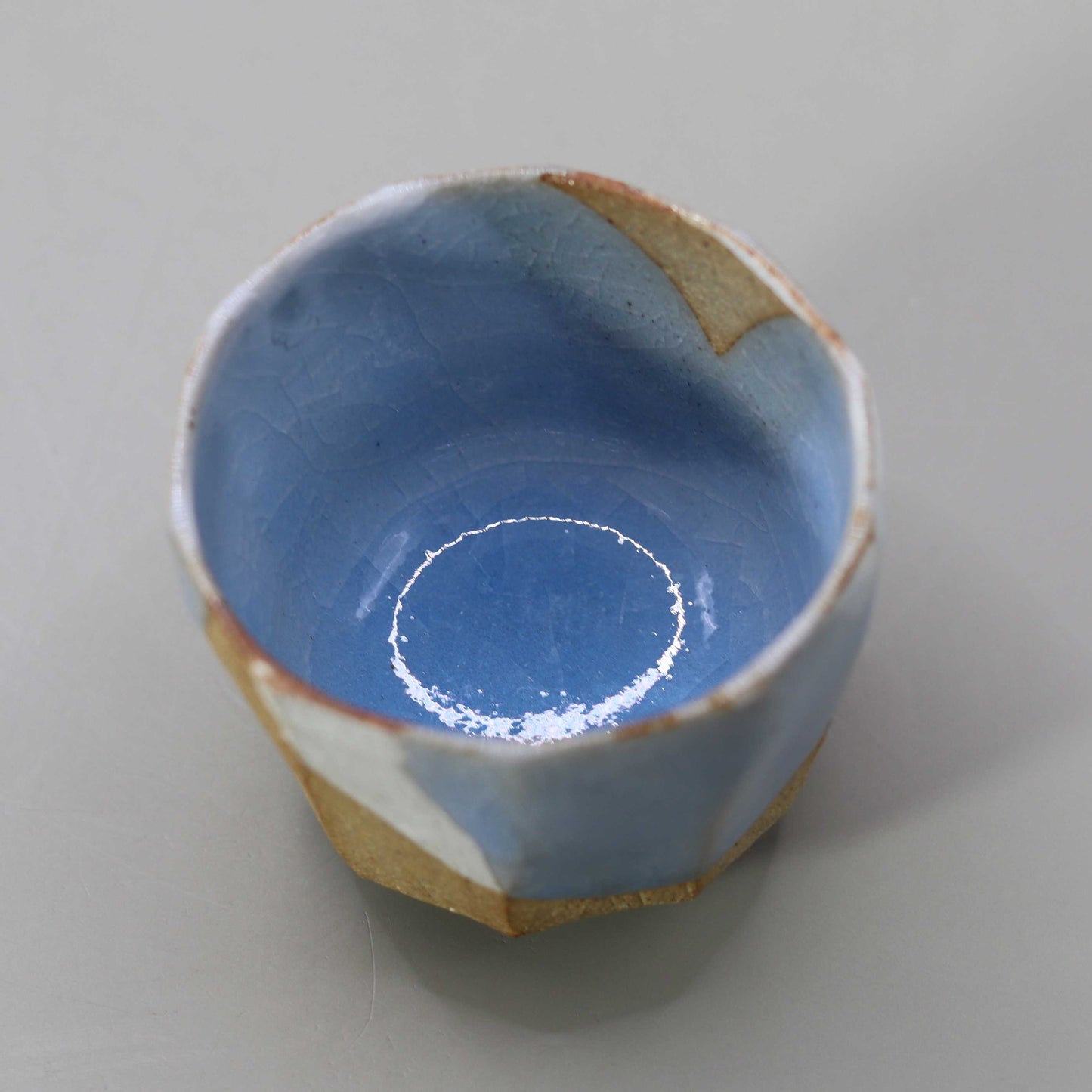
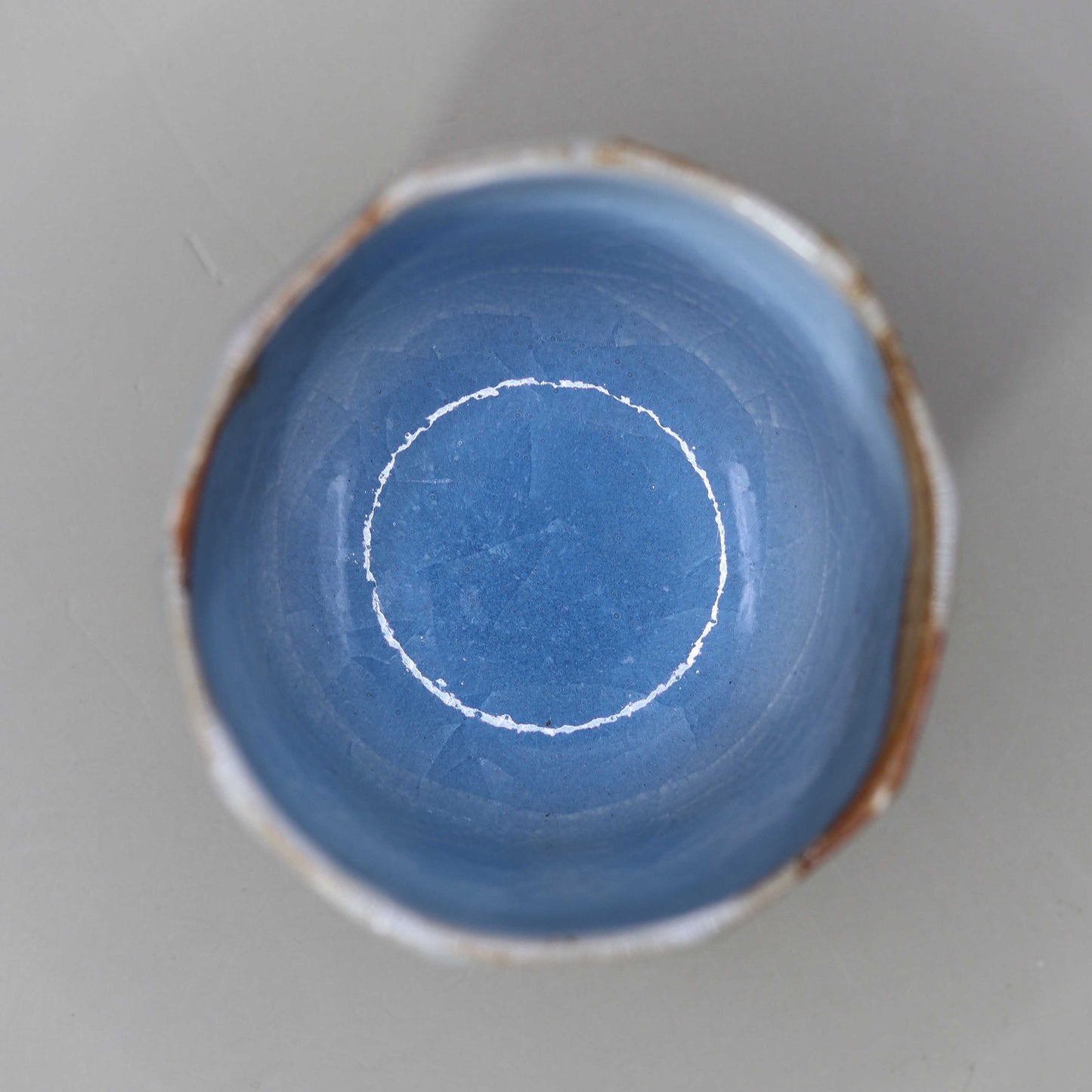


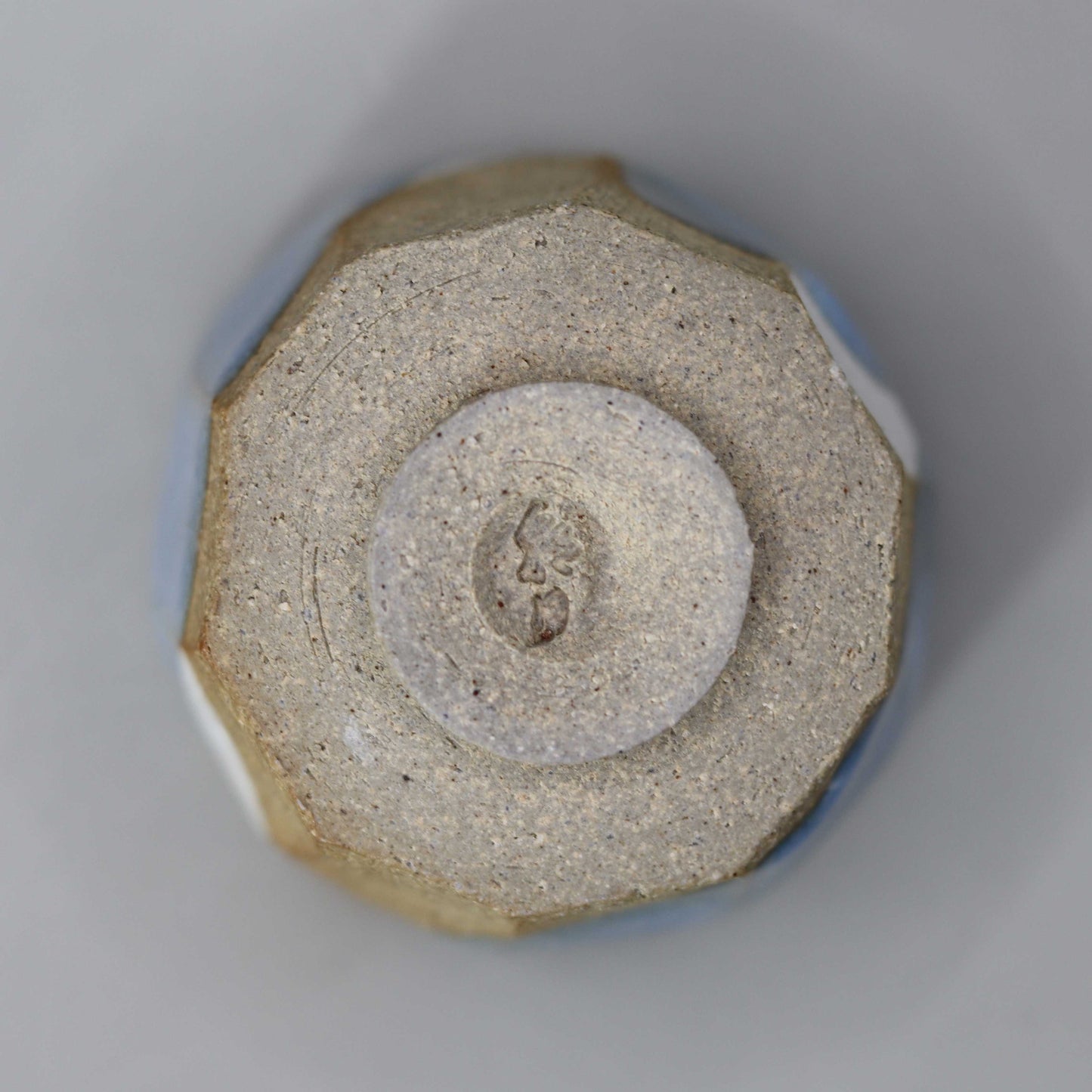
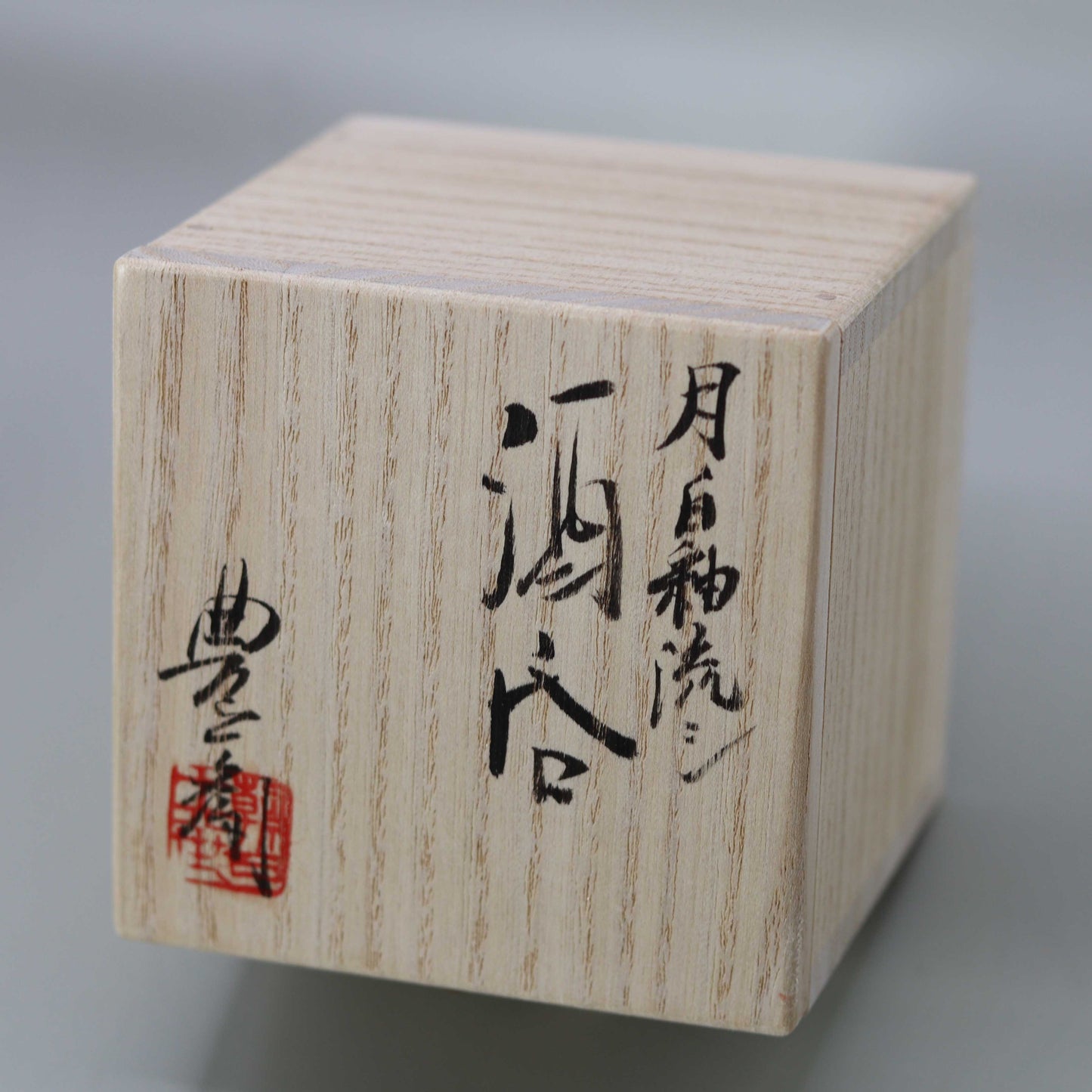
Multi-Column
-
[I will send it to you quickly and carefully]
We carefully package each product in a way that suits it best.
Also, delivery times vary depending on the piece (vessel, etc.).
Items that already come with a box will be shipped within 1-3 days of the order date.
For items that require a box to be made after your order, it will take approximately 30 days for production to be completed and then shipped.
In either case, once we have confirmed your order, we will contact you by email to inform you of the delivery date.
-
[Requests when purchasing pottery]
Even products that look the same may differ slightly in color, shape, size, etc.
The way the glaze is used, the power of the kiln, the firing method, the season, and the humidity also affect the appearance of the pottery.
Please understand the individuality of each piece of pottery and enjoy the unique warmth of handmade.

